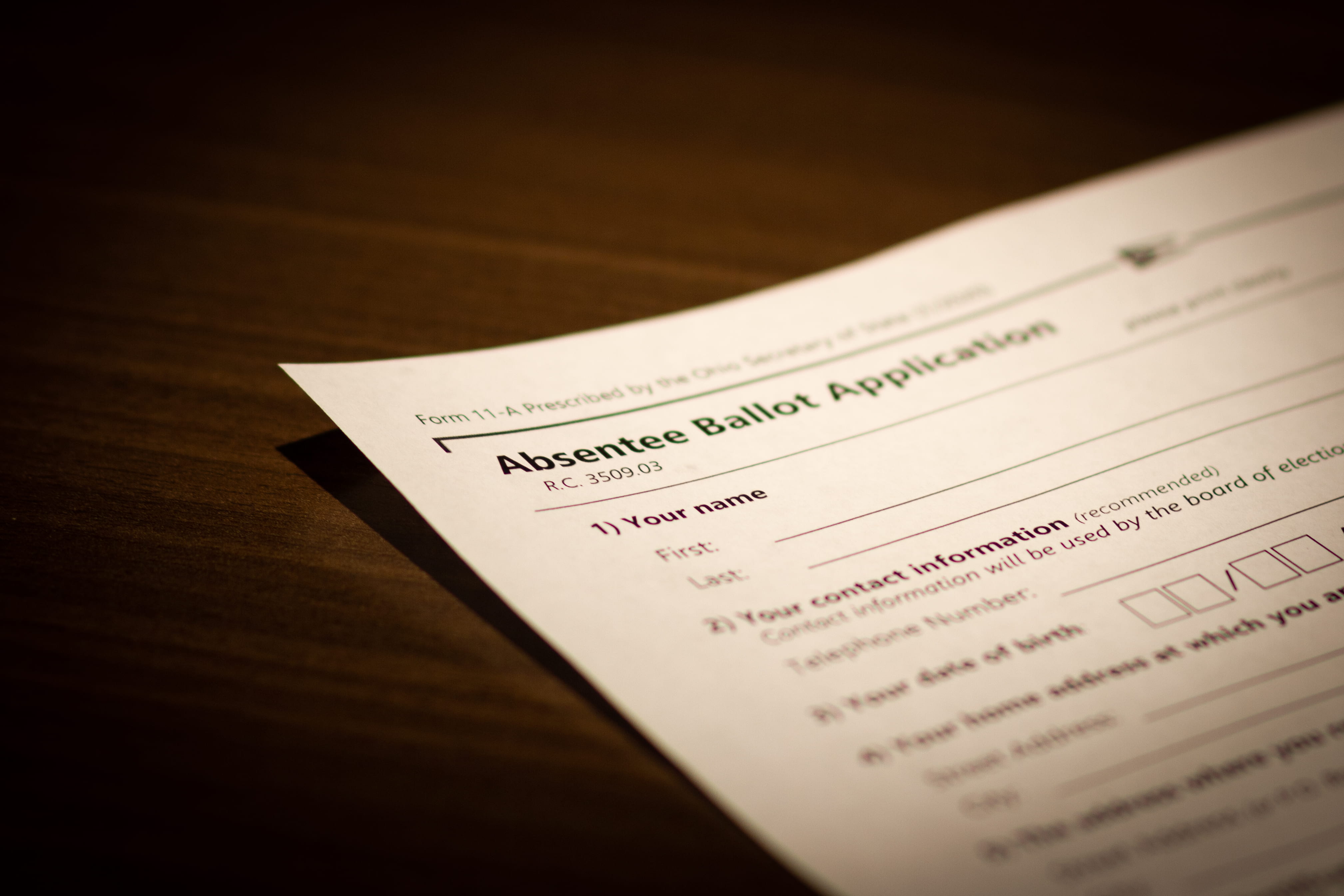
Ohio State student organizations are working to get students registered and ready to vote in November amid COVID-19 restrictions and an expected increase in absentee voting. Credit: Jack Long | Managing Editor for Digital Content
A normal election year would be marked by students and other volunteers spread across campus with clipboards and enthusiastic attitudes ready to register students to vote, but COVID-19 has changed 2020 and, for some, how they’ll be marking their ballot seems up in the air.
Ohio State student organizations are working to get students registered to vote this November, but the when, where and how is still uncertain for many due to COVID-19 restrictions and an expected increase in absentee voting.
According to the National Study of Learning, Voting, and Engagement, 82.2 percent of Ohio State students registered to vote in 2016, and 59.1 percent of Ohio State students actually voted — almost nine percentage points more than the national average for higher education institutions.
Olivia Hoppe, a fifth-year in political science and history and co-president of OSU Votes, said the organization looks to improve upon the 2016 voting rate by hanging QR codes around campus that link to resources about deadlines and by presenting information to student organization events. But Hoppe said another aspect of increasing student voter turnout is encouraging them to look beyond the top of the ballot.
“There are tons more offices up for a decision besides the president. And honestly, those positions will have a lot more of an effect on your daily life than the president will,” Hoppe said.
Local races, such as city council and state representative seats, directly influence utilities, public transportation, construction and other things that impact students, Hoppe said.
“Someone may say, ‘I don’t care about the streets or the garbage,’ but a lot of people care about sports. Some stadiums are publicly funded,” Hoppe said. “Whatever you care about, politics is personal. You just have to find a way to make it personal for you.”
Eduardo Reyeros, a first-year in political science, said his permanent residence is close to campus and he already requested his absentee ballot. Despite the preparation, however, Reyeros said he is still worried about being able to vote.
“It’s the nervousness in the back of your head that makes you wonder what if things go wrong mailing it back or turning it in,” Reyeros said.
For a student to vote absentee in Ohio, they must sign and mail an absentee ballot application to their county’s Board of Elections. They will then receive an absentee ballot, which they must send or turn in to the Board of Elections by Nov. 2. Other states have different processes for requesting and submitting absentee ballots.
OSU Votes is working with the Ohio State chapter of the NAACP and Undergraduate Student Government to add voting information and resources to the Ohio State Discover app.
Jalyssa Stanford, a fourth-year in public health and president of NAACP at Ohio State, said student voting is a crucial part of addressing social issues.
“Every day, there is something new and shocking and unheard of that shouldn’t be happening. I think most people should be uncomfortable with the state of the country right now,” Stanford said. “With the way people have been treated, you should feel uncomfortable. You should want to make a difference in any way that you can.”
Students can get absentee ballot request forms at the Ohio Union DTix Desk, Hale Hall and in residence halls. OSU Votes has a complete list of places on campus to get forms on its website.
The Ohio Union will be open as a polling place Nov. 3, a university spokesperson confirmed.
Students can register to vote or update their voting addresses at the Ohio Secretary of State website. The registration deadline is Oct. 5.


